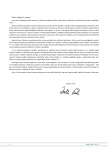Cancer treatment induced bone loss (CTIBL): burning issue in prostate cancer patients – our experience
Authors:
Prof. MUDr. Dalibor Pacík, CSc. 1; as. MUDr. Vítězslav Vít 1; prim. MUDr. Jana Katolická, Ph.D. 2; RNDr. Jiří Jarkovský, Ph.D. 3
Authors‘ workplace:
Urologická klinika LF MU, FN Brno
1; Onkologicko-chirurgické oddělení, FN u sv. Anny Brno
2; Institut biostatistiky a analýz, MU Brno
3
Published in:
Urol List 2011; 9(1): 60-64
Overview
Androgen deprivation therapy (ADT) is well established in locally advanced or metastatic prostate cancer patients management. Its contribution to the prognosis of these patients is undisputable; CTIBL as its consequence is discussed in a much lesser extent. Cancer treatment induced bone loss leads ultimately to increased morbidity and mortality as well as to increased societal costs. We investigated the presence of osteoporosis and osteopenia based on bone mineral density measurement at DXA in a group of
104 patients at our clinic. The following article presents our data and considers new treatment option for patients suffering from CTIBL presented by a new monoclonal antibody denosumab.
Key words:
androgen deprivation therapy (ADT), BMD, RANKL, denosumab, prostate cancer, pathological fractures
Sources
1. ÚZIS ČR, Aktuální informace č. 6/2009.
2. Heidenreich A, Aus G, Bolla M et al. EAU guidelines on prostate cancer. Eur Urol 2008; 53: 68–80.
3. Loblaw DA, Virgo KS, Nam R et al. Initial hormonal management of androgensensitive metastatic, recurrent, or progressive prostate cancer: 2006 update of an American Society of Clinical Oncology practice guideline. J Clin Oncol 2007; 25: 1596–6050.
4. Bolla M. Adjuvant hormonal treatment with radiotherapy for locally advanced prostate cancer. Eur Urol 1999; 35 (Suppl 1): S23–S26.
5. Bolla M, Collette L, Blank L et al. Long-term results with immediate androgen suppression and external irradiation in patients with locally advanced prostate cancer (an EORTC study): a phase III randomised trial. Lancet 2002; 360: 103–108.
6. Messing EM, Manola J, Sarosdy M et al. Immediate hormonal therapy compared with observation after radical prostatectomy and pelvic lymphadenectomy in men with node-positive prostate cancer. N Engl J Med 1999; 341: 1781–1788.
7. Higano CS. Side effects of androgen deprivation therapy: monitoring and minimizing toxicity. Urology 2003; 61: 32–38.
8. Maillefert JF, Sibilia J, Michel F et al. Bone mineral density in men treated with synthetic gonadotropin-releasing hormone agonists for prostatic carcinoma. J Urol 1999; 161: 1219–1222.
9. Cooper C. The crippling consequences of fractures and their impact on quality of life. Am J Med 1997 (suppl); 103: 12S–17S.
10. Smith MR, Lee WC, Brandman J, Wang Q, Botteman M, Pashos CL. Gonadotropin-releasing hormone agonists and fracture risk: a claims-based cohort study of men with nonmetastatic prostate cancer. J Clin Oncol 2005; 23: 7897–903.
11. Weinfert K, Li Y, Castel L et al. The impact of skeletal-related events on health-related quality of life of patients with metastatic prostate cancer. Ann Oncol 2002; 13 (suppl 5, abstr 662): 180.
12. Oefelein MG, Ricchiuti V, Conrad W et al. Skeletal fractures negatively correlate with overall survival in men with prostate cancer. J Urol 2002; 168: 1005–1007.
13. Smith MR, Egerdie B, Toriz NH et al. Denosumab in Men Receiving Androgen-Deprivation Therapy for Prostate Cancer. N Engl J Med 2009; 361: 745–755.
Labels
Paediatric urologist UrologyArticle was published in
Urological Journal

2011 Issue 1
Most read in this issue
- Management of urethral stricture: dorsal flap from buccal mucosa – the gold standard
- Urinary tract and genital trauma
- Hormone therapy in the management of prostate cancer: treating the cancer without hurting the patient
- Neuro-urological assessment and treatment
